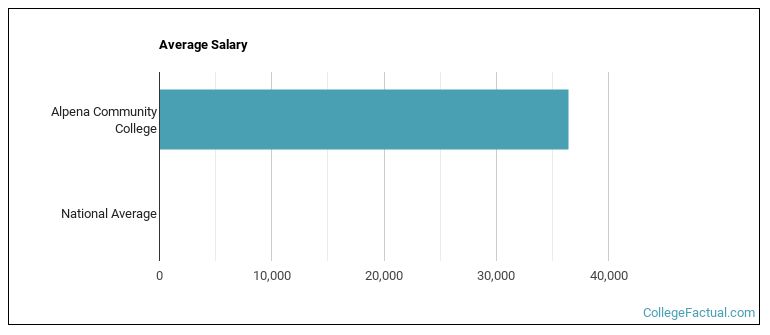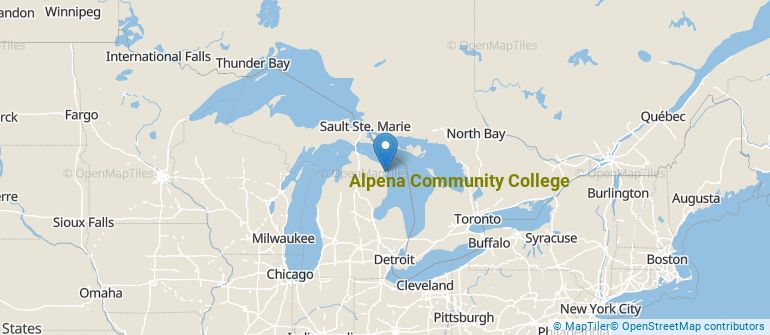 by our College Data Analytics Team
by our College Data Analytics TeamCollege Factual recognizes the best colleges and universities in its annual rankings. These rankings include categories for best overall colleges, best colleges for each major, best value schools, and much more.
Alpena Community College was awarded 2 badges in the 2025 rankings. The highest ranked major at the school is construction trades.
Explore the best ranked schools for the programs you are most interested in.
Alpena Community College was not ranked in College Factual's 2025 Best Overall Colleges report. This could be for a number of reasons, including lack of data.
Alpena Community College has an open admissions policy, so you should not have much trouble being accepted by the school. Still, it is important to fill out the application completely and submit any requested materials, which may include proof that you have a high school diploma or the equivalent.
The student to faculty ratio at Alpena Community College is about average at 14 to 1. This ratio is often used to gauge how many students might be in an average class and how much time professors will have to spend with their students on an individual level. The national average for this metric is 15 to 1.
In addition to the student to faculty ratio, some people look at what percentage of faculty members are full-time as a sign of how much time professors will be able to spend with their students. This is because part-time teachers may not be be on campus as much as their full-time counterparts.
The full-time faculty percentage at Alpena Community College is 50%. This is comparable to the national average of 47%.
The freshmen retention rate tells us what percentage of first-year, full-time students choose to continue on to their sophomore year at a particular school. The rate at Alpena Community College is 66%, which is about average when compared to the national rate of 68%.
During the 2017-2018 academic year, there were 1,436 undergraduates at Alpena Community College with 537 being full-time and 899 being part-time.
| $0-30 K | $30K-48K | $48-75 | $75-110K | $110K + |
|---|---|---|---|---|
| $1,167 | $2,383 | $5,816 | $8,434 | $9,660 |
The net price is calculated by adding tuition, room, board and other costs and subtracting financial aid.Note that the net price is typically less than the published for a school. For more information on the sticker price of Alpena Community College, see our tuition and fees and room and board pages.
Almost 66% of college students who graduated with the class of 2018 took out student loans, but that percentage varies from school to school. At Alpena Community College, approximately 29% of students took out student loans averaging $5,320 a year. That adds up to $21,280 over four years for those students.

See which majors at Alpena Community College make the most money.
Get more details about the location of Alpena Community College.

Contact details for Alpena Community College are given below.
| Contact Details | |
|---|---|
| Address: | 665 Johnson St, Alpena, MI 49707 |
| Phone: | 989-356-9021 |
| Website: | www.alpenacc.edu/ |
| Most Popular Majors | Bachelor’s Degrees | Average Salary of Graduates |
|---|---|---|
| Electrical & Power Transmission Installers | 107 | NA |
| Liberal Arts General Studies | 23 | NA |
| Nursing | 21 | NA |
| Practical Nursing & Nursing Assistants | 19 | NA |
| Business Administration & Management | 18 | NA |
| Precision Metal Working | 10 | NA |
| Criminal Justice & Corrections | 9 | NA |
| Teacher Education Grade Specific | 8 | NA |
| Health/Medical Prep Programs | 8 | NA |
| Vehicle Maintenance & Repair | 8 | NA |
Online learning options are becoming more and more popular at American colleges and universities. Online classes are great for students who have busy schedules or for those who just want to study on their own time.
In 2022-2023, 659 students took at least one online class at Alpena Community College. This is a decrease from the 676 students who took online classes the previous year.
| Year | Took at Least One Online Class | Took All Classes Online |
|---|---|---|
| 2022-2023 | 659 | 301 |
| 2021-2022 | 676 | 282 |
| 2020-2021 | 705 | 268 |
| 2018-2019 | 356 | 102 |
Learn more about online learning at Alpena Community College.
Footnotes
*The racial-ethnic minorities count is calculated by taking the total number of students and subtracting white students, international students, and students whose race/ethnicity was unknown. This number is then divided by the total number of students at the school to obtain the racial-ethnic minorities percentage.
References
More about our data sources and methodologies.